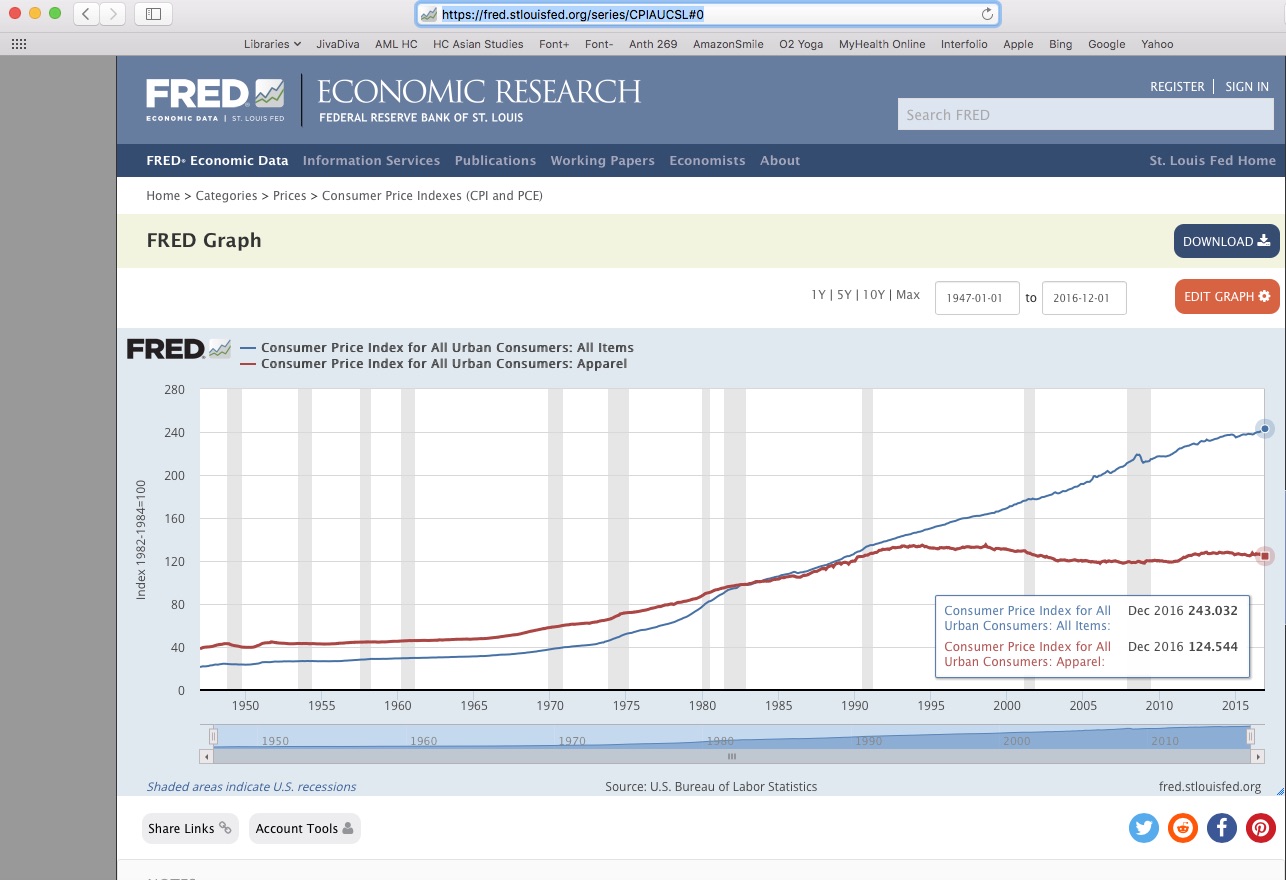I. Structure of Course
II. Consumption as the "Vanguard of History" (Daniel Miller)
A. Consumption drives global economy
B. Miller: "Consumption... is the one arena where most of us still feel we have some power left to influence what we might become" (20)
C. Two questions1. Why is consumption so important?
2. What took anthropologists so long to recognize this?
III. Production and Exchange in the Development of Anthropology
A. Origins of social science (Marx, Durkheim, Weber)1. Changes in 19th century Europe: industrialization, urbanizationB. 1920s: Anthropologists like Mauss, Malinowski focus on exchange
2. Human evolution as march of technological progress
3. Changing modes of production propel system1. Commodities, money = impersonal
2. Gifts, barter = reciprocity, mutual obligation, social relationships
IV. Consumption as a Form of Imperialism
A. Consumption seen as destroying indigenous culturesa. Trinidadians drinking Coca-Cola or Malaysian teenagers wearing Levi'sB. Anti-American nationalist and socialist movements
b. Symbolic violence, neo-imperialism, Westernization
V. Shifts in the Organization of Late Capitalism Promote Consumption
A. Consumption rises with income, stimulates production
B. Vertical integration1. Producers are distributorsC. Shifts in consumption in developing countries
2. Gap, Ann Taylor, supermarket brands: flexible, efficient, fast in responding to consumer demands1. Attractive markets
2. sneakers
VI. The Collapse of Communism
A. Slavenka Drakulik: communism failed to produce basic necessities like sanitary napkins
B. Capitalism meets consumer needs, makes products accessible
VII. Critiques Linking Consumption with Production
A. Industrial revolution, globalization have increased quantity of goods, lowered prices
B. American consumption of clothing1. 1998: 17.2 billion articles of clothing purchased, 16% increase over 1993C. American consumption depends on exploitation of producers
2. Clothing prices have been stable for decades, other consumer goods have risen in price:
3. Meanwhile, "Women's clothing store sales in the US increased by $4.6 billion between 2005 and 2014" (https://fungglobalretailtech.com/news/fashion-becoming-faster/).1. Low wages, long hours, poor conditions abroad
2. Domestic "outsourcing"
VIII. Consumption, Pleasure, and Cultural Distinctiveness
A. Self-expression, pleasure
B. Miller: Coca-cola in Trinidad
C. Consumption of mass-produced goods can promote heterogeneity



